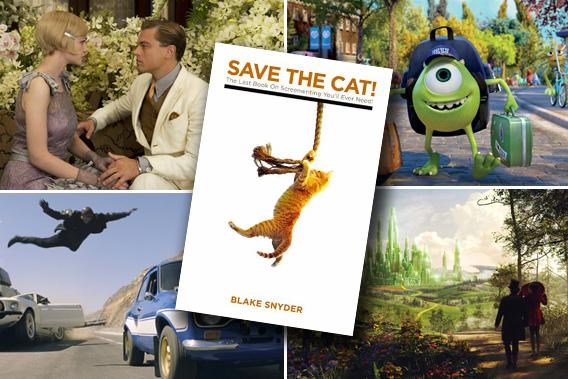During the making of the 1980 film, The Return of the Blues Brothers, it wasn’t just the budget that exploded in size. In the early stages of production a mysterious caller told the film’s producer, Bob Weiss, to be at home later in the evening. Weiss received a thick manuscript wrapped in the cover of a phone book. The 324-page document, almost three times the size of regular screenplay, bore the writing credit “By Scriptatron GL-9000.”
No such screenwriting machine ever existed, of course. Back in the early ’80s, the idea of automated authoring was as comically improbable as anything else in the Blues Brothers’ screenplay, conceived by meatbots Dan Aykroyd and John Landis.
Even though the film wildly overshot its budget and schedule (thanks largely to actor John Belushi’s fondness for Bolivian marching powder), it remained somewhat watchable. But if you’ve been wondering lately why today’s Hollywood blockbusters have a been-there, seen-that feel, it’s because they are literally formulaic. These megaplex spectacles might as well be written by, for, and about robots.
Some observers blame one source in particular: screenwriter Blake Snyder, who penned the 1992 film Stop! Or My Mom Will Shoot! and the 2005 how-to book Save the Cat! The Last Book on Screenwriting You’ll Ever Need. Although his Stallone vehicle stiffed with the critics, and Snyder himself passed away in 2009, the book survived him as a must-have addition to scriptwriter shelves.
The title comes from the Snyder’s idea that a film’s protagonist needs to do something to win the audience’s sympathy in the first 10 minutes of a film, like save a cat. The plot should follow 15 touchstone “beats,” or events, determined right down to the page number of a script.
Peter Suderman, film critic for The Washington Times, claims in an article for Slate that a surprising number of Hollywood films tightly follow the book’s precepts, including such recent stinkers as The Great and Mighty Oz, Jack the Giant Slayer and Fast Furious 6. Not to mention the charming Oscar-winning fairy tale, Silver Linings Playbook.
When a superhero fights one villain only to discover he is actually fighting another, this accords with one of Snyder’s signature beats, which occurs around the midpoint of the film. He also emphasizes male heroes over female heroines — not surprising since the largest demographic for Hollywood action films is represented by young men.
Save the Cat! software and apps are now available for wannabe Tarantinos. In fact, computer-aided screenwriting has a long pedigree. A writer friend paid $400 in 1994 for software that performed like Snyder’s paperback bible, she tells me. Her screenwriting teacher at UBC “brought the guy in who sold StoryPro” after telling the class the program was “fantastic.”
The software mentoring doesn’t necessarily stop at the screenwriter. Epagogix, an entertainment consulting firm, offers studios a robot’s-eye view of pitched screenplays. The company analysts tabulate the plot points and scores them according to predetermined values. A computer algorithm then breaks down the scores to determine the box office value of a projected film, with a 10 percent margin of error.
Does it work? “Richard Furlin, a movie financier with MovieArb, says he’ll back a film only if it’s been vetted by Epagogix,” notes Marketplace.org. Yet even though the company name conjures up some kind of futuristic superglue, many filmgoers are failing to go with the program. A number of recent blockbusters-to-be, such as The Lone Ranger and After Earth, failed to return the expected numbers, leaving the film’s backers and bean counters scratching their heads.
Is this software-channelled creativity turning Tinseltown into an assembly line for blockbuster bombs, just as “high-frequency trading” by computer algorithms has turned Wall Street into a cyber-casino threatened by unpredictable “flash crashes’? Not quite yet, it seems. According to Variety magazine, the 2013 summer box office is set to break a record, in spite of a string of formulaic flops.
At least there’s still television — which may be the five least likely words I’ve ever strung together in this space. Dramatic series like Breaking Bad and Mad Men far outshine the juvenilia regurgitated by today’s popcorn-computational complex. With their unpredictable plots, complex characters and penetrating dialogue, these cable productions seem somehow more…human.



